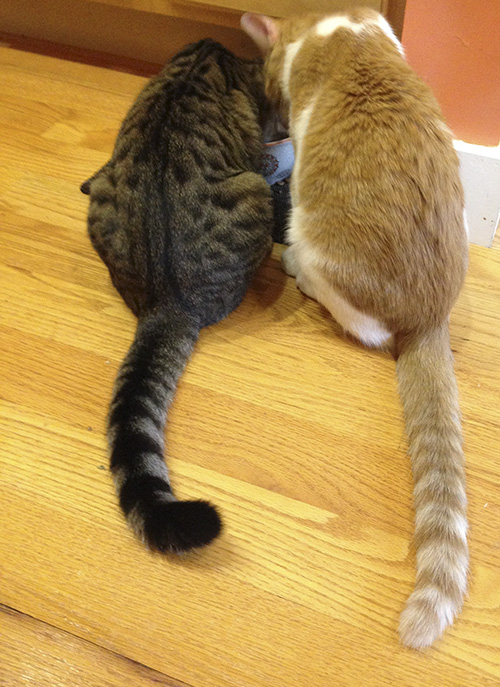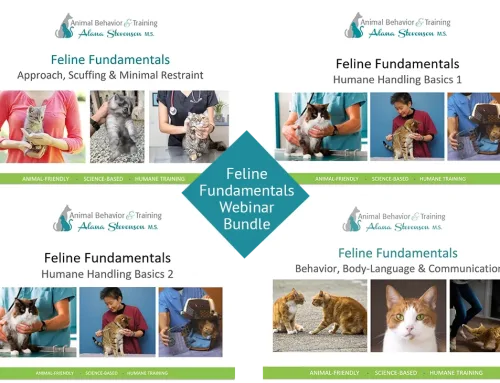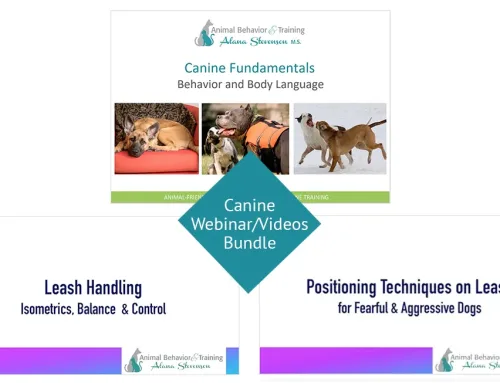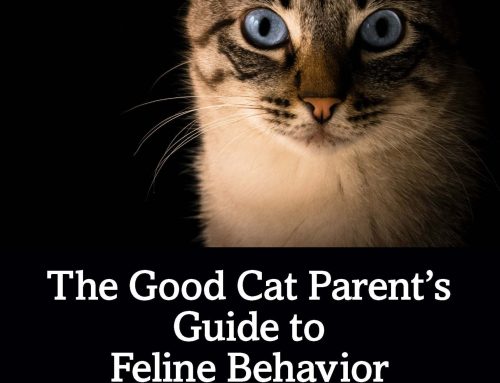
Kittybear & Zozo Photo by Beth Dayton
When looking to adopt only one animal – don’t separate bonded pairs, even if one is extra cute or appealing. Instead, look for a singleton.
It is a common occurrence that bonded or paired animals are routinely separated at shelters and during rescue. The rationale for this is that these animals are easier to adopt as ‘singletons.’ However, this thinking comes at a behavioral price. Myriads of behavior problems can result by separating bonded pairs.
Often animals are not socialized very well. Socialization does not simply mean exposure. It means positive exposure at an individual animal’s pace and within their comfort zone to other animals, people, novel objects, sounds, and places.

BooBoo & Jemima at UVHS
If all an animal knows or has left is the comfort and familiarity of another animal, separating them can be traumatic. Even if one animal—usually, the more confident or social one—might benefit by being separated for an adoption, the animal who’s left behind may fall apart and have numerous behavioral problems.
These two kitties (left) fell in love while at the Upper Valley Humane Society (UVHS).
And the humane society did the right thing – they housed the two cats together and are adopting them out as a pair. Although, unfortunately, it may take longer, these cats will be happier once they’re adopted and the adoption will likely be more successful.
The benefit of keeping bonded pairs together:
- They provide companionship for each other.
- You can be away for longer periods, especially for cats and smaller animals, without having to worry that they are alone or isolated.
- They are less likely to show significant signs of separation anxiety and are less likely to be as clingy—the quintessential ‘velcro-dog.’
- They get more exercise and/or social play and stimulation.
- They are less socially isolated.
- They can play with each other.
- They are happier.
- They are behaviorally healthier.
- They show less attention-seeking behavior (barking at you while you watch tv, meowing to keep you up all night, grabbing magazines from the counter or socks from the laundry bin).
- There is less play aggression, mouthing, and play-biting, especially for active, energetic or young animals.
Problems when separating bonded animals:
- Shy animals or less secure ones usually copy the more confident and/or older animals. Fearful animals who are then separated can be very hard to socialize and take longer to adapt to new situations and people.
- They are more likely to be ‘needier’ or ‘clingier.’
- They are more likely to have separation anxiety.
- If timid, they can be harder to socialize and take longer to come out of their ‘shell.’
- They are more likely to be depressed.
- They are more likely to experience boredom and/or anxiety, which can lead to obsessive-compulsive behaviors (tail-chasing, pacing, self-licking, feather-plucking, whining).
- Less confident or insecure animals may be emotionally traumatized.
- Increased likelihood of play aggression for active cats, and attention-seeking behavior (meowing all night).
- Increased likelihood of chewing, digging, and destructive behavior in young and energetic animals.
- Increased play-biting and attention-seeking behavior in energetic dogs.
When inquiring on animals for adoption, ask for their history and if they came in with any other animals or companions. Often, this can be found in the rescue’s or shelter’s database. Since animals can be separated at intake, unless you specifically ask and someone seeks that information, you may never know. Their companion may be with a foster or at the shelter as well.
© 2017 Alana Stevenson. All Rights Reserved.




